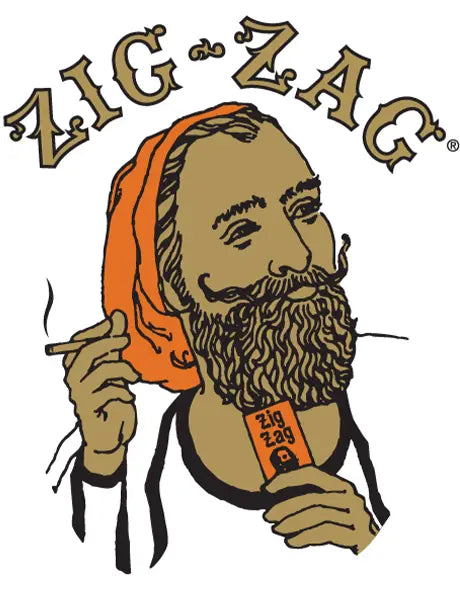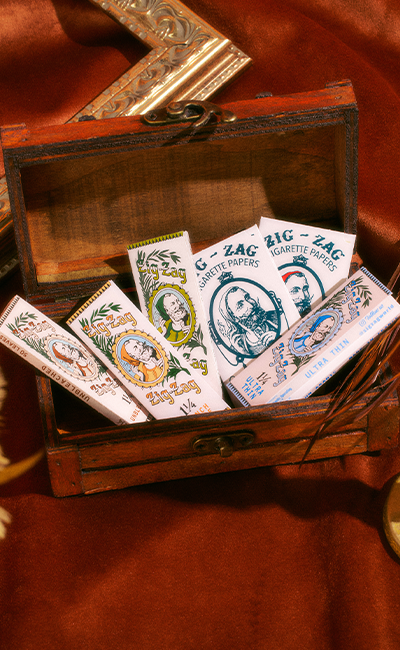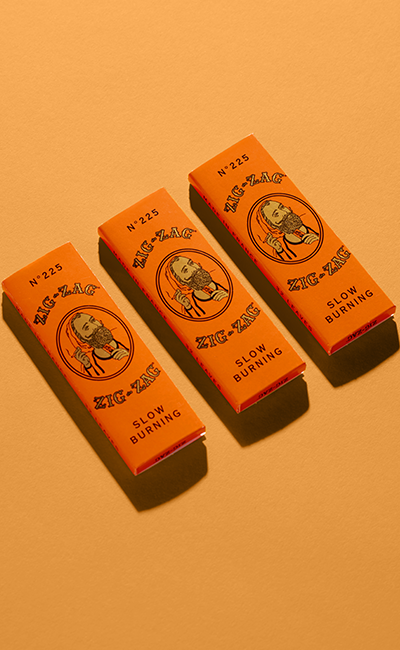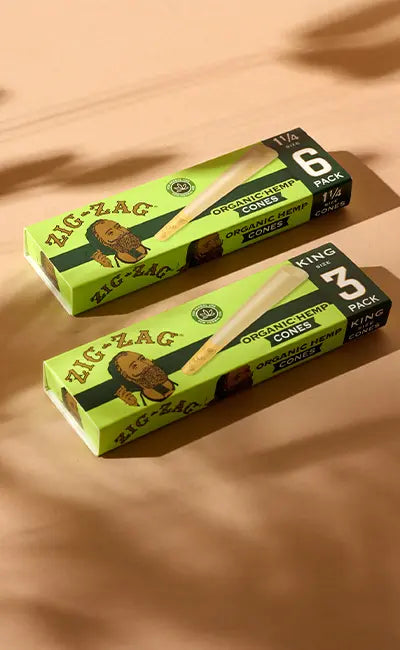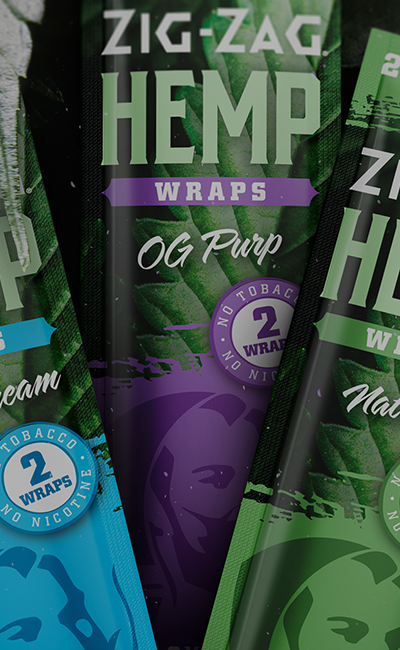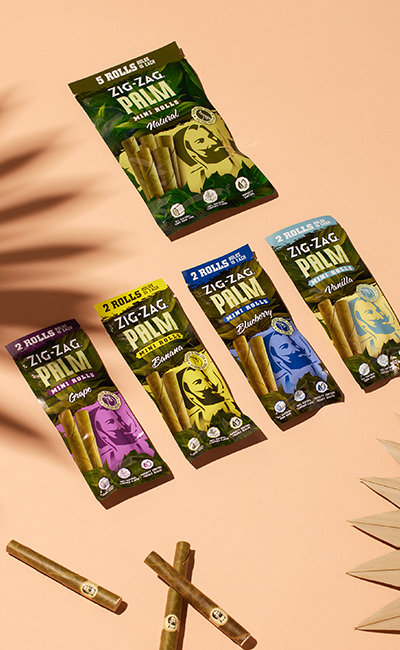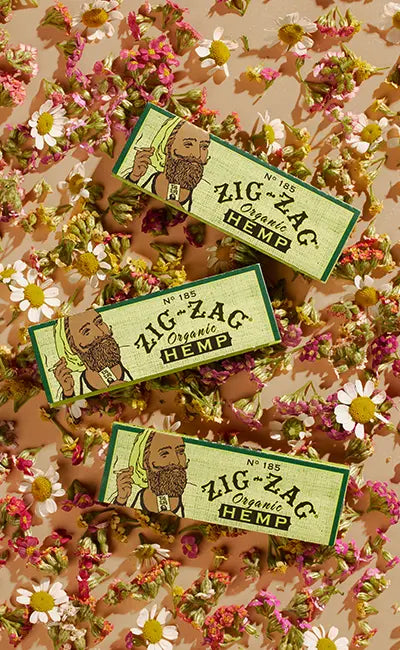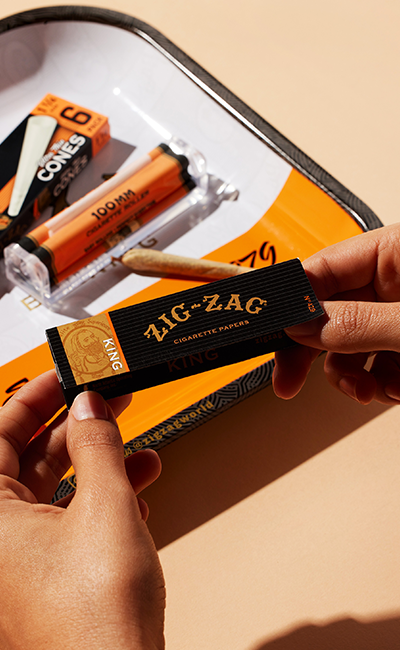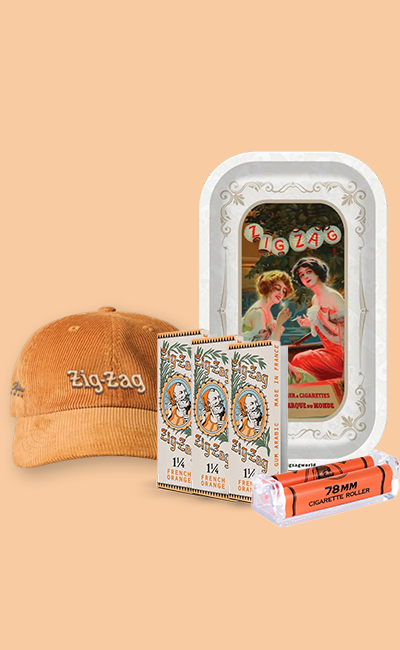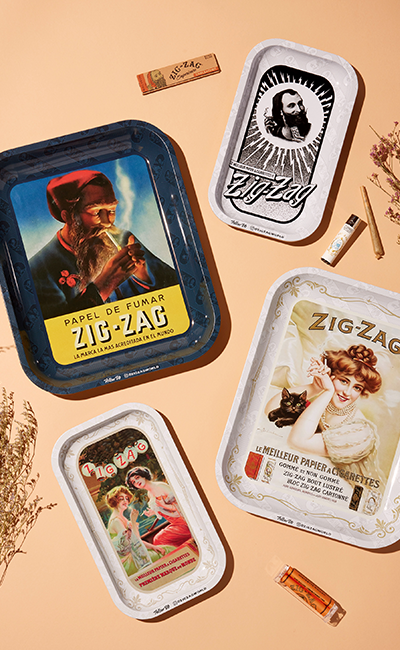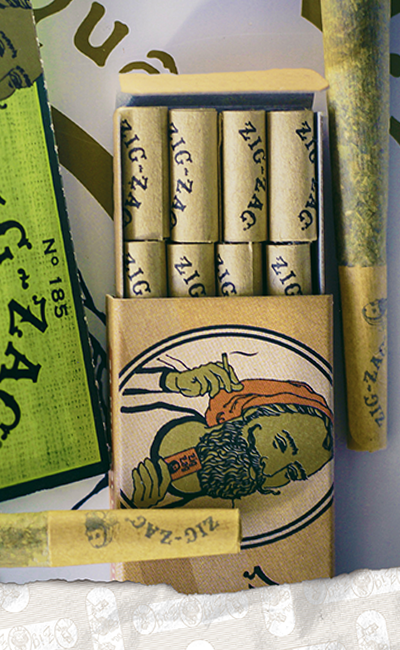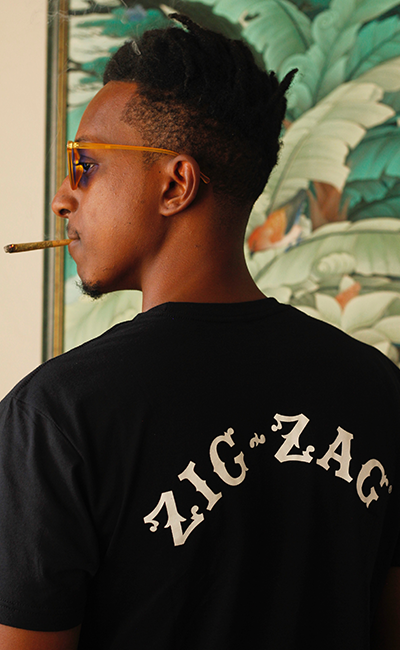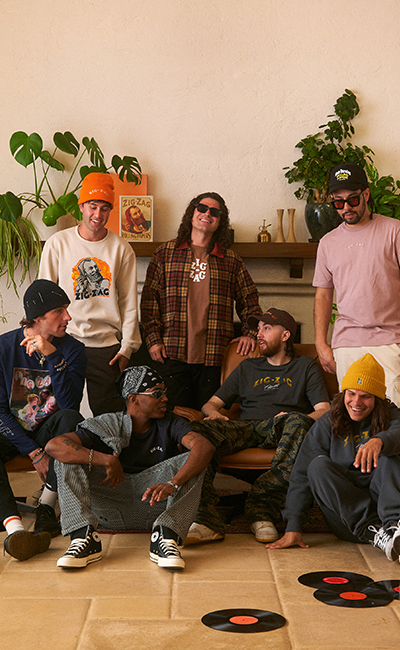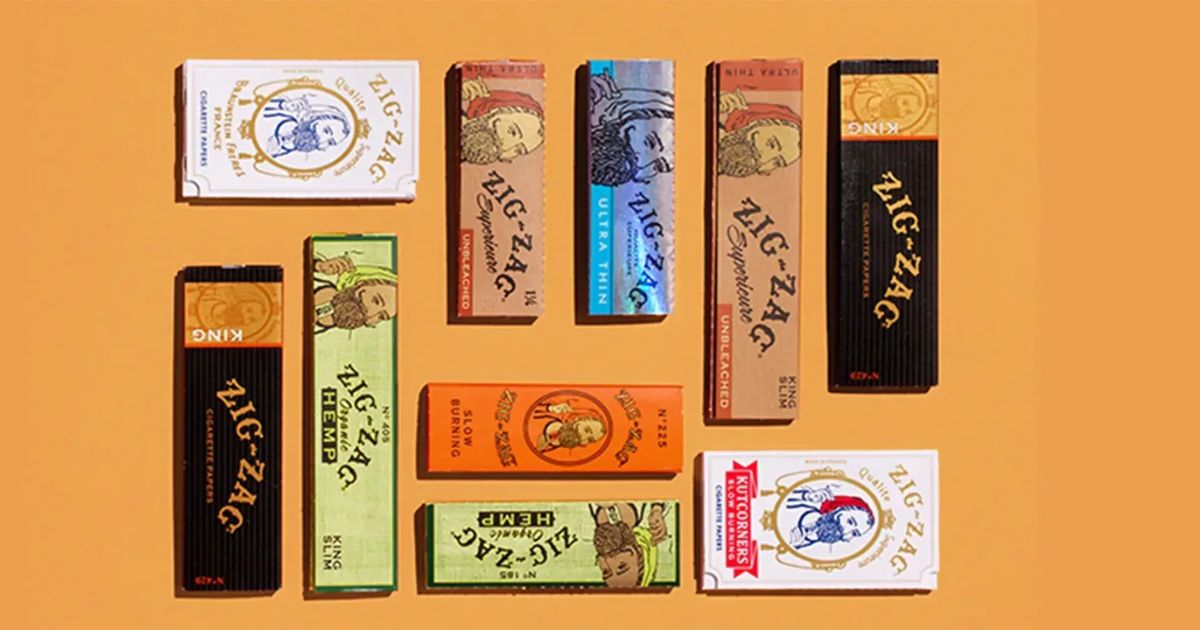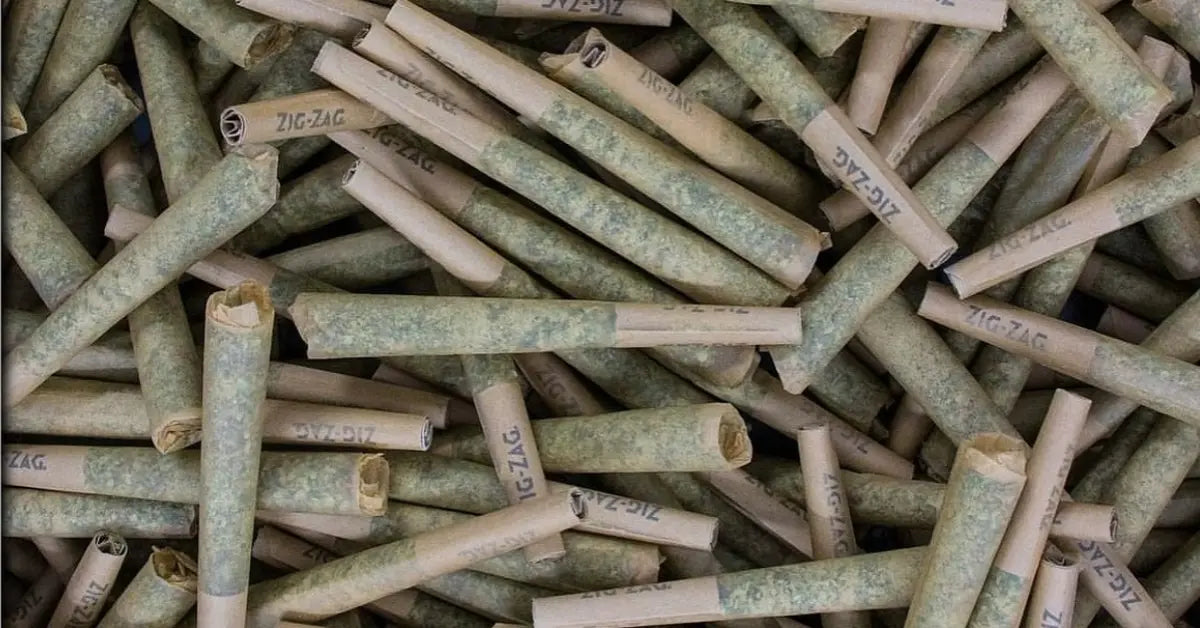How Are Rolling Papers Made?
How Zig-Zag Rolling Papers Are Made
Since 1879, we’ve stuck to doing one thing right: making rolling papers you can trust. In this guide, we’re walking you through how our rolling papers come to life. We won’t get too deep into science or chemistry, but we’ll show you the steps that go into every pack.
Raw Materials Selection
We keep things simple and plant-based. Our papers start with real, natural materials that you’ve probably heard of: hemp, flax, and wood pulp. Let’s go through the main ones we use and why they matter.
Wood Pulp
This is one of the original sources used in rolling papers, and we still use it because it adds strength and structure, so the paper holds up from start to finish. It’s also part of what gives some Zig-Zag papers that familiar classic feel.
Flax
Flax gives our papers a soft, flexible texture that’s easy to roll with. It’s thin and smooth, which helps create an even surface. You’ll notice how light it feels in your hands, and that’s not by accident. Flax helps us deliver a consistent paper without adding bulk.
Hemp
We use hemp because it’s strong, clean, and easy to work with. It gives our papers a durable feel without adding thickness. Hemp also burns slow and steady, which a lot of people look for in rolling papers. On top of that, it’s a renewable material, so it supports better choices for the environment too.
The Pulp-Making Process
Once we’ve got the raw materials ready, we move into the pulp-making stage. First, the materials are softened through controlled heat and mechanical grinding. We use machines called defibrators to pull the fibers apart without damaging them. This takes time, but it's key to making sure we get that smooth, consistent texture you're used to.
Next, we clean the fibers under high heat and pressure. The result is a compact form that heads into a large pulper. We add water here to fully separate the fibers and create a fine suspension. This watery mix is what we use to start shaping the sheets.
Sheet Formation
The pulp arrives at the machine as a thin, diluted suspension that’s mostly water. From there, it gets sprayed onto a moving screen, called the forming table.
As the sheet moves forward, the fibers line up and begin sticking together. The table moves side to side, which helps the fibers settle evenly. Most of the water drains off during this stage, leaving behind a consistent sheet.
We press and dry the sheet using a series of rollers and heated cylinders. It’s a careful process, and we’ve built in automatic checks to monitor the pressure, temperature, and flow throughout the line. This keeps the paper consistent from start to finish.
Once the sheet is dry and fully formed, it's rolled up into large reels. Each reel can weigh around 250 kilograms and stretch up to 25 kilometers long.
Watermarking
Before we move forward, each sheet passes through our watermarking process. This is where we stamp in the Zig-Zag pattern you see on every paper.
We run the sheets through a high-pressure roller engraved with our logo and design. This step gives the paper a more transparent look and confirms it meets our quality standards.
If the paper doesn’t meet our requirements, it doesn’t get the watermark. No stamp means it didn’t make the cut.
Cutting and Gumming
Once watermarking’s done, we cut the sheets into smaller reels and get them ready for gumming.
The gumming machine unrolls the reels and adds strips of gum made from natural acacia sap. This gum is collected directly from acacia trees and has been part of our process for years. We apply it in thin, precise lines.
After that, we slice between the gum lines to create reels that match the width of your paper.
Interleaving
Now we’re at the step that helped put Zig-Zag on the map. Interleaving. It’s what lets you pull out one sheet and have the next one pop up, ready to go.
We run multiple reels at once through machines that cut and fold the paper while feeding each sheet into place. Each one bends in the center and lines up perfectly with the next, creating a stacked block of papers ready for booklets.
We invented this system and even took home a Gold Medal at the 1900 World’s Fair for it. It's still part of every booklet we make.
Final Packaging and Distribution
Once the papers are cut, gummed, and interleaved, it's time to pack them up. Each block of papers gets stacked and folded into booklets. Then, we seal them and add our Zig-Zag branding.
We keep the packaging consistent so it's easy to recognize on any shelf. Everything from the color to the logo placement follows the same layout you’ve come to trust.
After packing, we move everything into cartons and shipping boxes. From there, it all heads out through our global distribution network. You’ll find Zig-Zag papers stocked in stores around the world, always ready when you need them.
What’s the takeaway?
We’ve walked you through how Zig-Zag rolling papers are made, from picking raw materials to stacking the final booklets. It starts with plant-based fibers like hemp, flax, and wood pulp. Then comes the pulp-making, sheet formation, watermarking, cutting, gumming, interleaving, and finally, packaging and shipping.
We’ve been doing this for over a century, and we’re not slowing down. Our process mixes tradition with smart updates to keep the quality high and the details tight.
If you haven’t already, check out our full range of Zig-Zag rolling papers. Want updates and news? Sign up for our newsletter and stay in the loop.
